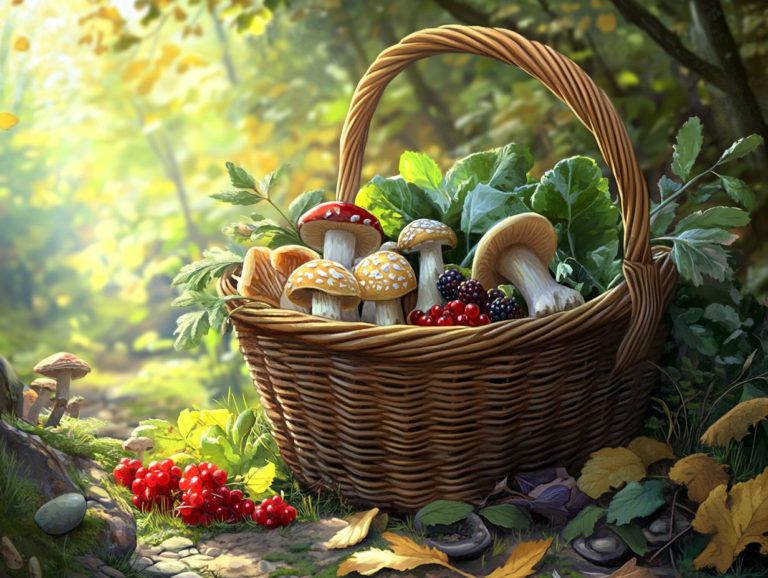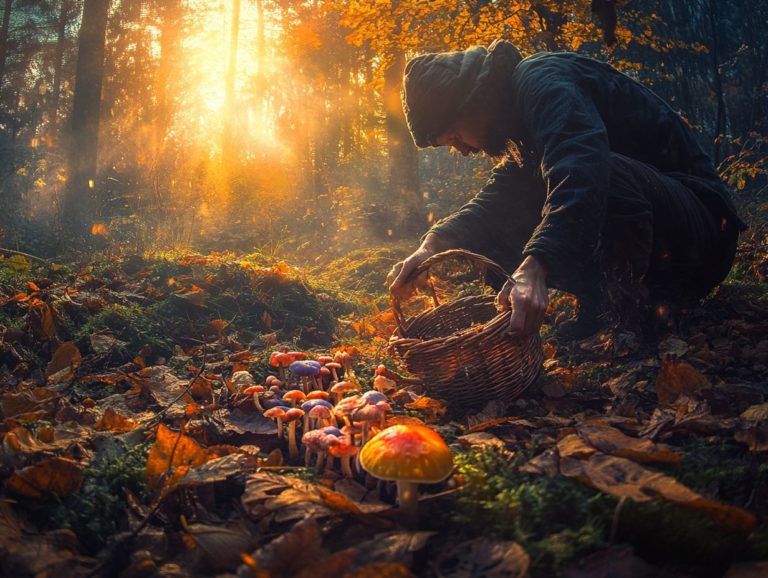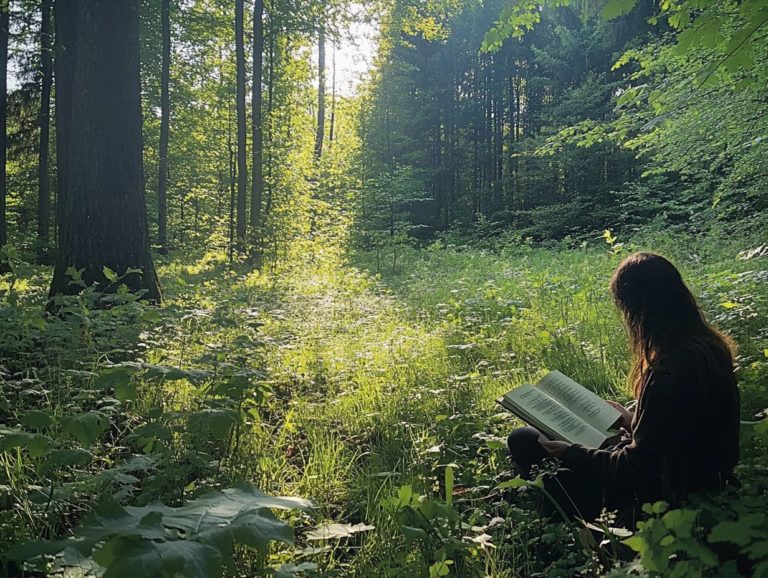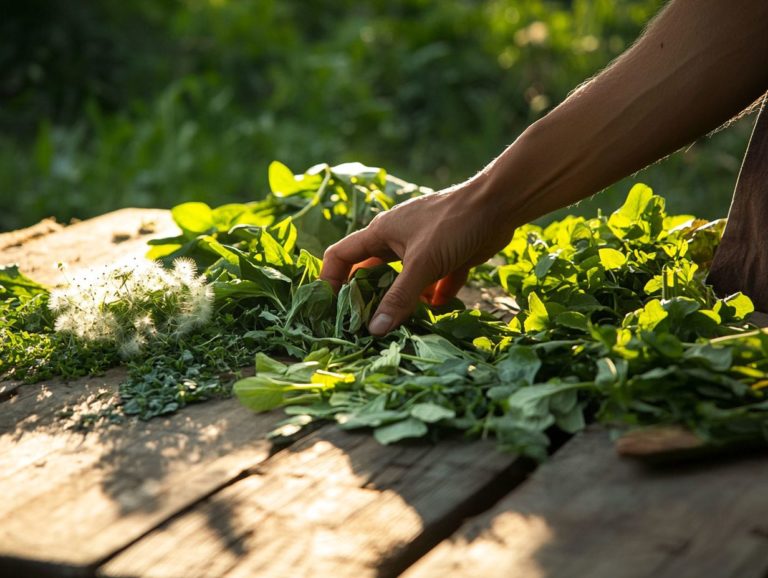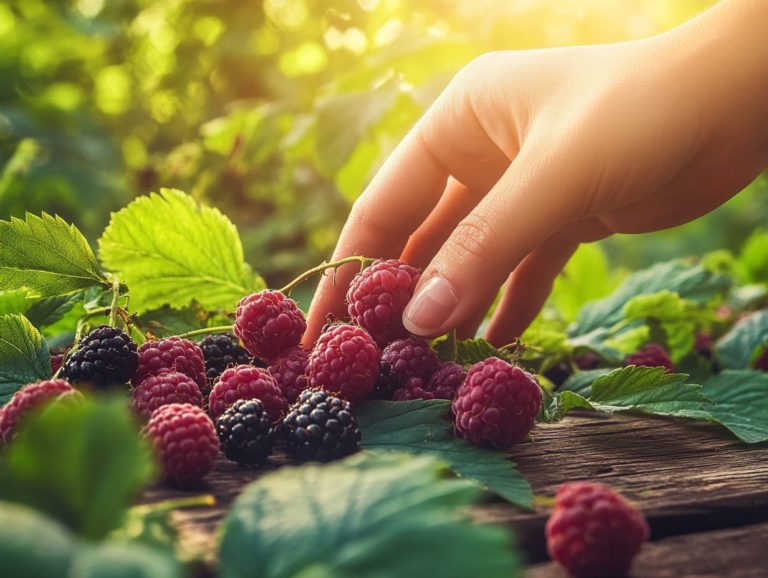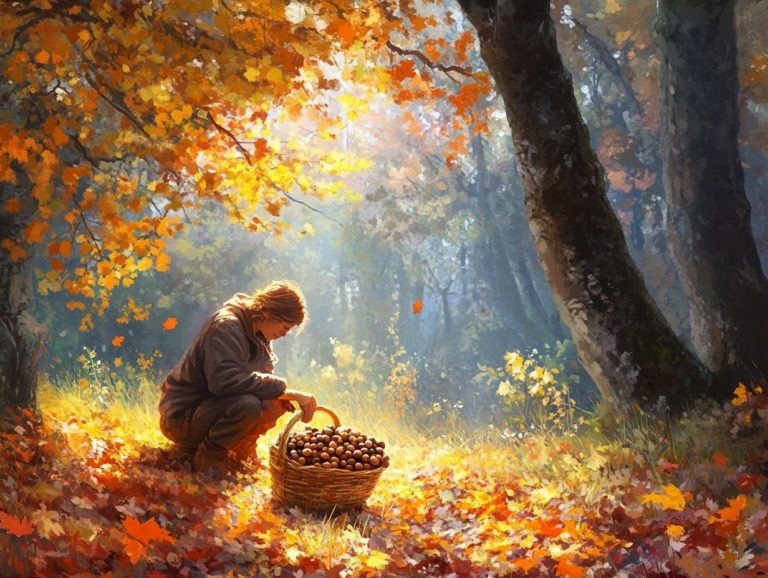Finding Local Edibles in Urban Settings
Urban foraging is more than a trend; it reconnects you with nature in the city.
As you explore parks and streets, you’ll discover a variety of edible plants that offer unique health benefits.
This guide covers the basics of foraging in urban areas. You’ll learn to identify common edible plants and follow essential safety tips.
It also includes delicious recipes to inspire your culinary adventures with foraged foods. Get ready to dive into the amazing green bounty around you!
Contents
- Key Takeaways:
- Benefits of Foraging in Urban Settings
- Identifying Edible Plants in Urban Areas
- Foraging Safety and Etiquette
- Preparing and Cooking Urban Edibles
- Frequently Asked Questions
- What are some common local edibles that can be found in urban settings?
- Is it safe to forage for local edibles in urban areas?
- How can I find local edibles in my city?
- Are there any precautions I should take when foraging for local edibles in urban areas?
- What are some benefits of foraging for local edibles in urban settings?
- Can I forage for local edibles all year?
Key Takeaways:
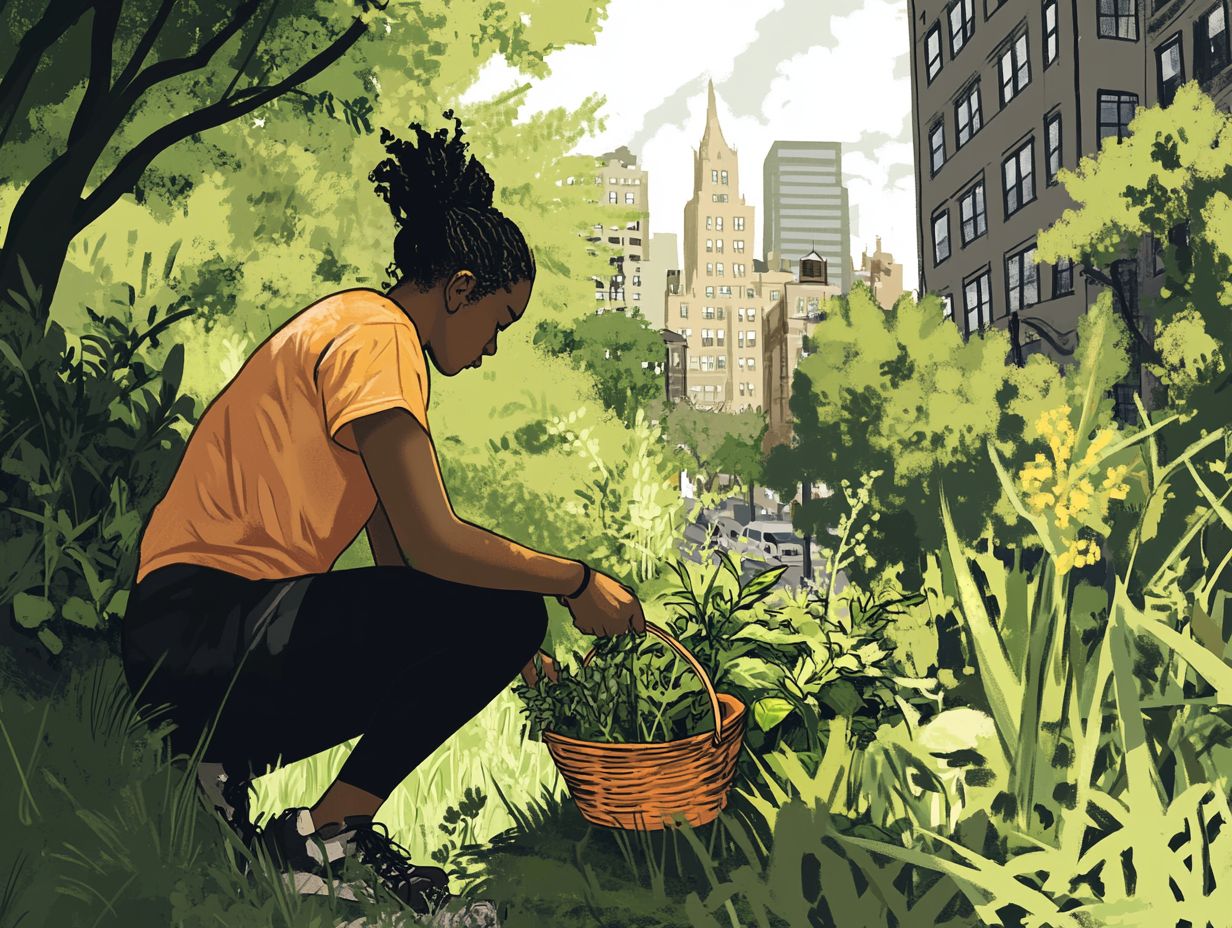
- Discover the benefits of urban foraging, including health, environment, and community benefits, along with the importance of food justice.
- Learn how to identify and harvest common types of edible plants in urban areas, safely prepare and cook them, and gather foraging tips.
- Practice foraging safety and etiquette by taking necessary precautions and following rules. Enjoy delicious meals with foraged foods using recipes and cooking tips. Sign up for foraging classes today and start your adventure!
What is Urban Foraging?
Urban foraging invites you to gather wild foods from the heart of the city, transforming overlooked spaces into sources of nourishment that embody the rich cultural and ecological tapestry of urban life. This practice champions a sustainable approach to eating and deepens your connection to local plants, highlighting the top local edibles to forage in your area while advocating for food justice.
Experts like Marla R. Emery, Wildman Steve Brill, and Alexis Nikole Nelson of BlackForager highlight how urban foraging encourages engagement with your surroundings, bolstering community health and raising awareness of nearby edible plants. Participating in a guide to foraging events in your city can further enhance this experience.
Rooted in traditions that span centuries, urban foraging is increasingly relevant in today s rapidly evolving city ecosystems, particularly in food deserts where access to fresh produce is limited. It stands as a powerful counteraction to industrial food systems, paving the way for more localized and sustainable living. Emery underscores foraging’s historical significance as a crucial food source during tough times, while Brill s educational initiatives help you recognize the abundance thriving in your neighborhood.
By tapping into these wild resources, you enrich your diet and cultivate a sense of stewardship toward nature, reinforcing the interconnectedness between residents and their environment, especially in the face of climate change.
Benefits of Foraging in Urban Settings
The advantages of foraging in urban environments reach far beyond merely gathering food; they encompass a rich tapestry of health, environment, and community benefits that resonate profoundly in today’s landscape, where food insecurity and climate change loom large, particularly in cities like New York City and Baltimore.
Engaging in urban foraging enables you to embrace food sovereignty, providing access to wild edibles while promoting sustainable land use practices. Additionally, the benefits of foraging in urban areas strengthen community gardens as essential resources for health and nutrition.
By joining local foraging groups, you refine your culinary skills and become a champion for food justice and sustainability right in your own neighborhood, sharing tips on social media.
Nutritional and Environmental Advantages
Urban foraging offers amazing nutritional and environmental benefits. You can harvest wild foods that often contain more vitamins and minerals than commercially grown ones.
This direct connection to local plants provides a chance to diversify your diet, enhancing your health while supporting responsible environmental practices.
Wild foods have a nutritional profile that often outshines traditional agriculture. They provide access to important plant nutrients, antioxidants, and essential fatty acids for your well-being.
Urban foraging helps you and your community embrace sustainable practices. This significantly reduces the environmental impact of transporting food from farms to your table.
This approach strengthens local economies. It deepens your appreciation for natural habitats and fosters a connection to the environment.
Identifying Edible Plants in Urban Areas

Learning to identify edible plants in cities is a valuable skill for anyone interested in foraging. It helps you confidently recognize and harvest a variety of wild foods, from dandelions to tasty mushrooms. Utilizing the best local resources for foraging edibles can further enhance your foraging experience.
Mastering plant identification enriches your foraging experience and boosts your appreciation for local flora. With practical foraging tips available from local classes, you can learn more about edible plants while committing to sustainability.
Common Types of Edible Plants
Some common edible plants you can find while foraging include dandelions, plantain, and various mushrooms. Each offers unique flavors and nutritional benefits.
By recognizing these plants, you can create delicious meals and support health in your community.
Consider dandelions, often seen as pesky weeds. They are rich in vitamins A, C, and K, making them great for salads or herbal tea.
Plantain, identifiable by its broad, ribbed leaves, can be cooked in many ways, from stir-fries to soothing poultices for skin issues.
As you explore urban areas, you ll discover many other edible plants. Purslane and lamb’s quarters add spice to your meals and enhance your diet, which is vital for addressing food insecurity.
How to Properly Identify and Harvest
Proper identification and harvesting techniques are essential for your urban foraging success. By mastering these skills, you can safely gather edible plants while minimizing your environmental footprint.
Understanding plant identification like recognizing features and knowing seasonal availability enables you to make informed choices. Connecting with local foraging groups and participating in classes provides valuable insights about sustainable harvesting practices and the rich variety of wild foods available.
To kick off your foraging journey, familiarize yourself with the local flora. Use guides or apps to help differentiate between edible and toxic species. This knowledge is crucial for your safety. Before you set out, check local regulations; some areas may have restrictions on harvesting.
As you explore nature, remember that every action impacts the ecosystem. Adopt sustainable harvesting practices by gathering only what you need and avoiding over-collection to preserve plant populations. Enhance your foraging experience by seeking less trafficked areas and understanding seasonal patterns.
Engaging with your community is key. This fosters shared knowledge and ensures that foraging practices remain respectful and responsible.
Foraging Safety and Etiquette
Foraging safety and etiquette are crucial as you embark on your urban foraging journey. Responsible harvesting practices safeguard your well-being and enhance environmental stewardship.
Observe local laws, respect private property, and understand foraging’s ecological impact. By following established guidelines and proper etiquette, you help ensure that wild foods remain abundant for future generations, while nurturing a sense of community and shared responsibility.
Precautions to Take and Rules to Follow
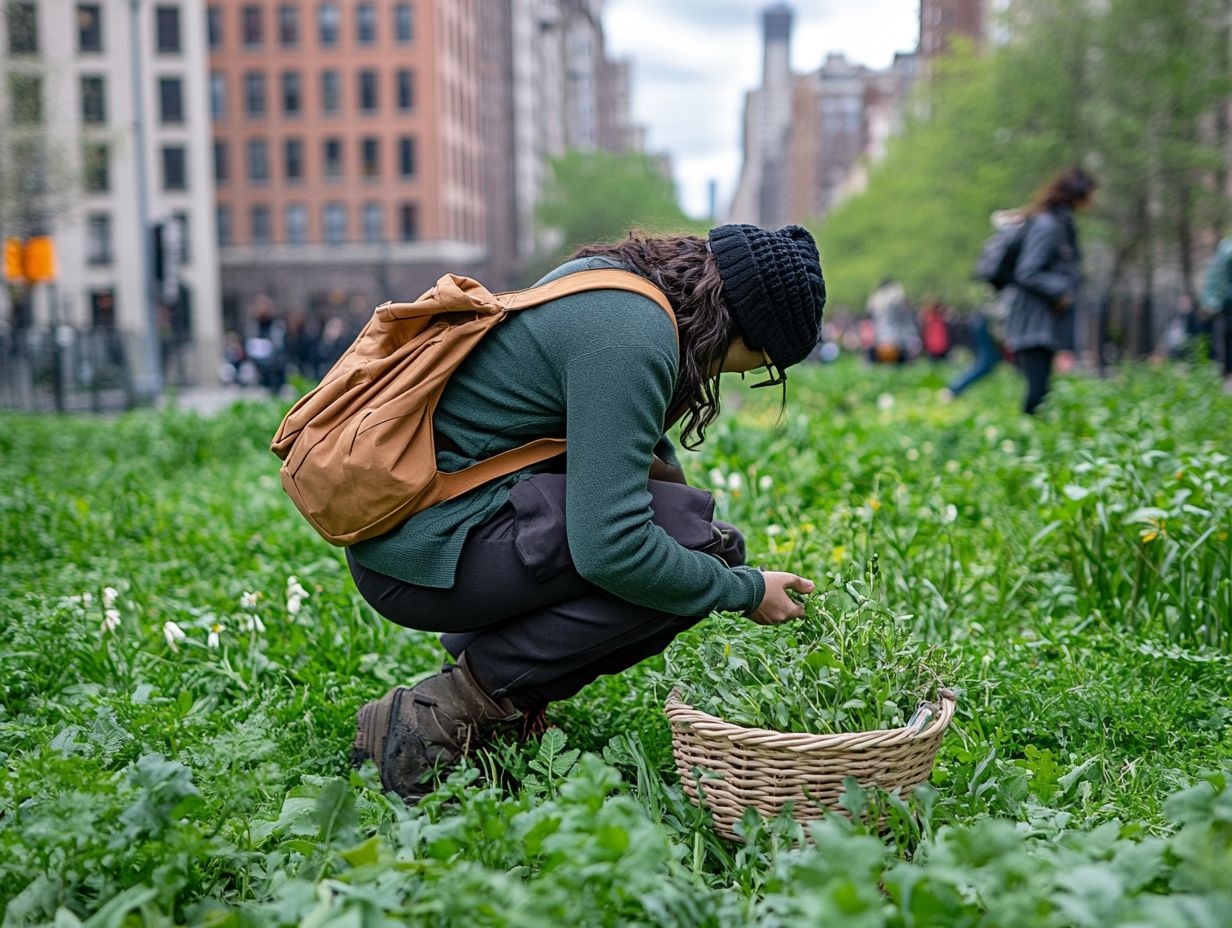
When you embark on urban foraging, take specific precautions and follow established guidelines to safeguard your well-being and local ecosystems. Hone your skills in identifying potentially toxic plants, recognize safe harvesting zones, and understand the laws about foraging in public areas. By taking these steps, you protect yourself and help the environment! How great is that?
Familiarize yourself with local regulations, as some areas may impose restrictions on harvesting or require permits. Practice responsible harvesting techniques; take only what you need and leave enough for wildlife and future growth this approach is vital for preserving the variety of plant life.
Use field guides and mobile apps to improve your plant identification skills, ensuring you collect only safe and edible species. Consider community workshops or joining local foraging groups to learn foraging techniques for urban environments. Sharing knowledge and experiences cultivates a deeper appreciation for your urban environment.
Preparing and Cooking Urban Edibles
Preparing and cooking urban edibles invites you to embrace creative techniques that showcase the unique flavors and nutritional advantages of wild foods. Imagine transforming foraged ingredients into unforgettable culinary experiences!
Whether you’re crafting a delightful dish from dandelions or adding edible mushrooms to a savory recipe, the possibilities are limitless. By exploring diverse cooking methods and experimenting with new recipes, you can unlock the potential of your local flora while sharing your passion with others in the community.
Get started today and discover the amazing wild foods in your area!
Recipes and Tips for Cooking with Foraged Foods
Creating recipes with foraged foods can be a truly rewarding journey, allowing you to experiment with unique flavors and ingredients sourced right from your local environment. Imagine whipping up dandelion salads or sautéing edible mushrooms. For those interested, a helpful resource is wild edibles in your backyard. The versatility of urban edibles opens up a world of possibilities to elevate your home cooking.
By incorporating foraging tips into your meal prep, you ll improve your cooking skills and deepen your connection to the environment and your community.
Explore the hidden treasures in the wild to find a wealth of herbs, greens, and fungi eager for their first-time use. Recipes featuring foraged ramps, wild garlic, or garden sorrel can transform ordinary dishes into gourmet experiences, showcasing the vibrant flavors nature has to offer.
Techniques like pickling wild berries or adding flavor to oils with herbs invite a playful approach to cooking, encouraging you to unleash your creativity and personal flair.
Engaging with local foraging communities can provide you with invaluable knowledge and spark new ideas, transforming your kitchen into a space not just for cooking, but for exploration and connection.
Frequently Asked Questions
What are some common local edibles that can be found in urban settings?
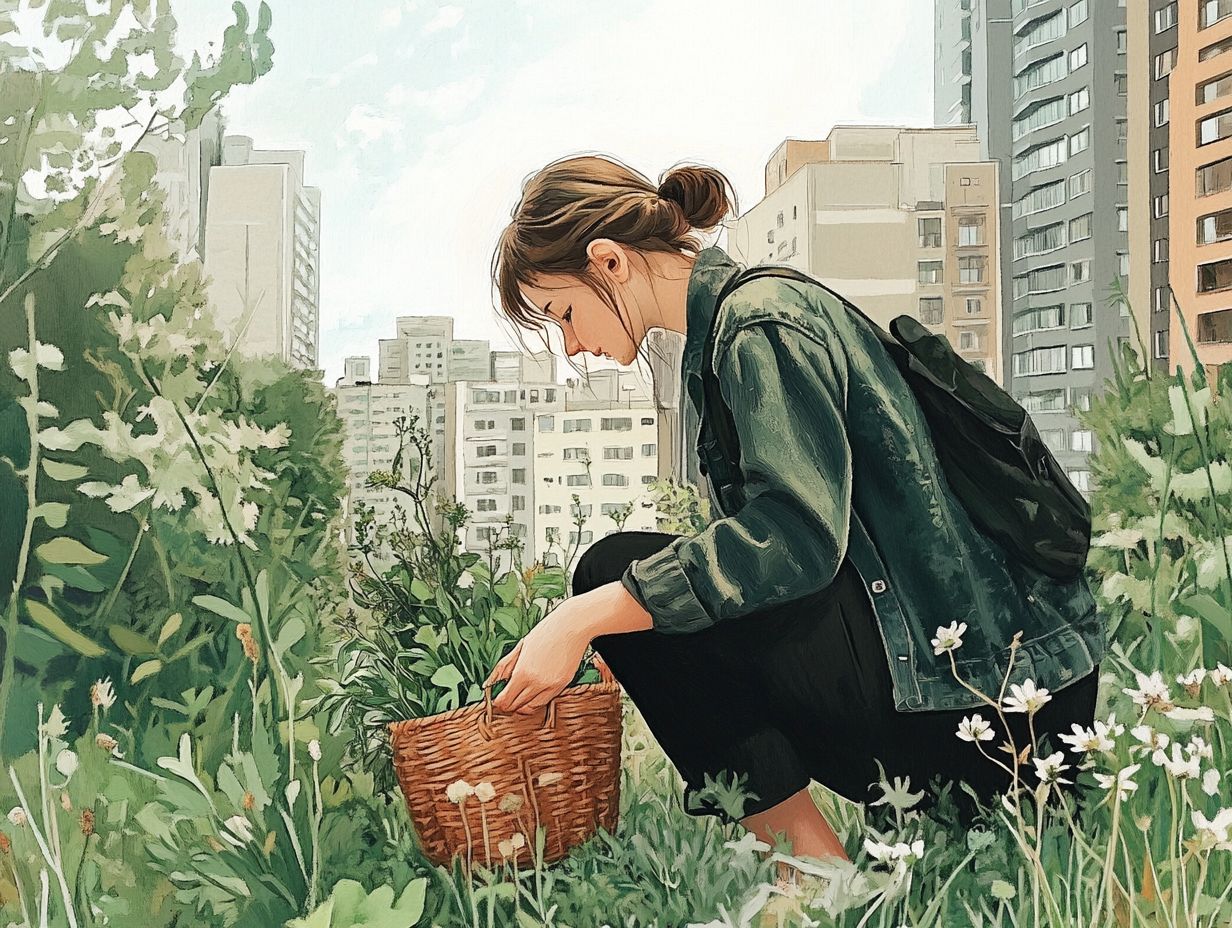
Some common local edibles in urban settings include wild berries, dandelion greens, sorrel, purslane, and chickweed.
Is it safe to forage for local edibles in urban areas?
It is generally safe to forage for local edibles in urban areas, but it is important to properly identify the plants and ensure they are not contaminated by pollutants or pesticides.
How can I find local edibles in my city?
You can find local edibles in your city by taking a walk around your neighborhood and looking for familiar plants or by joining a foraging group or class that focuses on foraging in urban environments: seasonal edibles.
Are there any precautions I should take when foraging for local edibles in urban areas?
Yes, it is important to avoid foraging near heavily trafficked roads or areas where pollution may be high. It is also recommended to wear gloves and wash all foraged edibles before consuming them.
What are some benefits of foraging for local edibles in urban settings?
Foraging for local edibles in urban settings can provide a free and healthy food source, promote sustainability, and reduce food waste while increasing your connection with nature and the community. Learning about identifying edible plants in urban areas enhances this experience even further.
Can I forage for local edibles all year?
While some edibles may be available year-round, it is important to research and understand the growing seasons and availability of different plants in your area before foraging. Some plants may only be available during certain times of the year.
Start your foraging adventure today and discover the delicious secrets in your own backyard!

